You’ll need proper ventilation when resin printing to protect yourself from toxic fumes, harmful VOCs, and ultrafine particles that standard room ventilation can’t handle. Your best options include grow tent enclosure systems with inline fans for controlled environments, fume hood ventilation for maximum safety, HEPA and activated carbon filter combinations when external venting isn’t possible, window-mounted exhaust fans for straightforward installation, and portable air purification units for space-constrained setups. Each solution offers unique advantages for your specific printing environment.
Grow Tent Enclosure Systems With Inline Fans
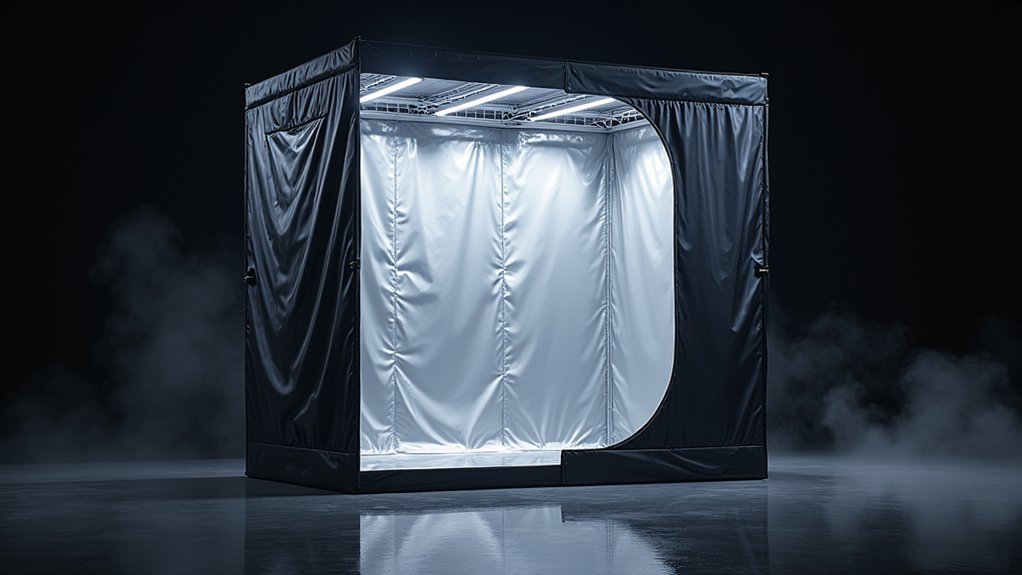
When you’re looking for a thorough ventilation solution, grow tent enclosure systems like the AC Infinity CLOUD LAB 422 offer an ideal controlled environment for resin printing.
These enclosures effectively contain harmful emissions and vapors while maintaining safety protocols.
You’ll want to integrate an inline fan such as the AC Infinity CLOUDLINE T4 for adjustable airflow that efficiently vents VOCs and ultrafine particles outside.
The fan’s variable speed control lets you customize ventilation based on your printing needs.
Variable speed fans allow precise airflow adjustment, ensuring optimal ventilation efficiency while adapting to different resin printing requirements and workspace conditions.
Adding a carbon filter enhances your setup by absorbing odors and reducing harmful fume concentrations before expulsion.
Proper ducting with flexible aluminum options and window adapters creates seamless connections to external venting systems, maximizing air quality throughout your printing process.
Fume Hood Ventilation for Direct External Exhaust
For professionals requiring maximum safety and efficiency, fume hood ventilation systems provide the most robust solution for direct external exhaust of resin printing emissions.
These systems create negative pressure that actively captures volatile organic compounds and ultrafine particles at their source, preventing contamination from spreading throughout your workspace.
You’ll need a hood positioned over your printer, an exhaust fan, and ducting that vents directly outside.
The negative pressure design guarantees contaminated air doesn’t recirculate indoors, making continuous operation safe even in enclosed environments.
Regular maintenance is essential for peak performance.
Clean your filters frequently and inspect ducting for blockages or damage.
This investment provides unmatched protection against VOC exposure while enabling professional-grade resin printing operations.
HEPA and Activated Carbon Filter Combinations
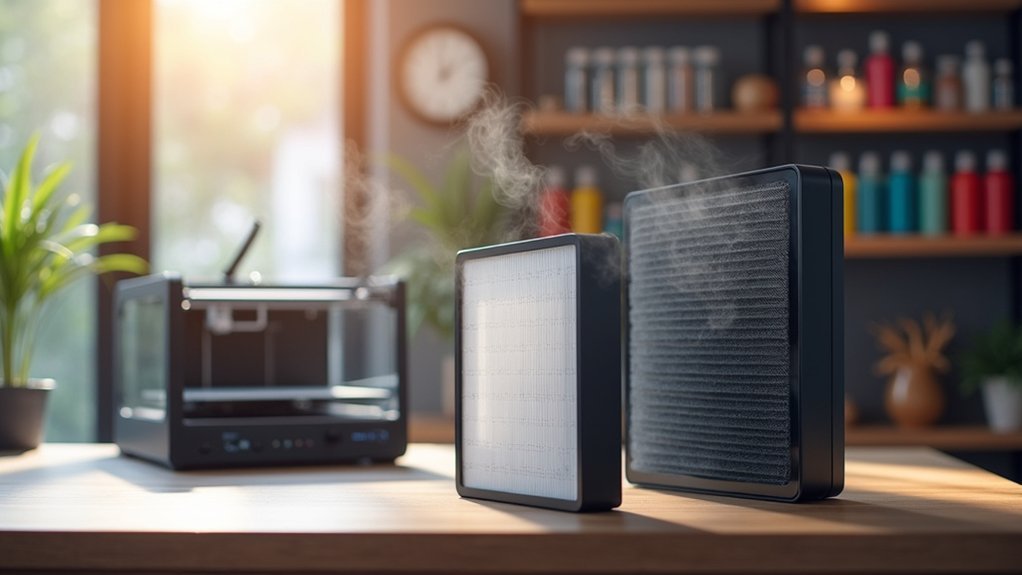
While fume hood systems offer maximum protection through direct external exhaust, HEPA and activated carbon filter combinations provide an excellent alternative for situations where external venting isn’t possible.
This dual-filter system effectively captures both ultrafine particles and volatile organic compounds from your resin printing operations.
HEPA filters rated MERV 17 or higher remove 99.97% of particles at 0.3 microns, protecting you from respiratory irritation caused by harmful particulates.
Activated carbon filters complement this by adsorbing VOCs and controlling odors, particularly important when you’re printing in enclosed spaces like grow tents.
Together, these filters dramatically improve air quality in your workspace, creating safer working conditions.
You’ll need to replace both filter types regularly to maintain their effectiveness in capturing harmful emissions.
Window-Mounted Exhaust Fan Solutions
Although installing ductwork for fume hoods requires significant modification to your workspace, window-mounted exhaust fans offer a straightforward alternative that you can set up quickly with minimal tools. These fans effectively remove VOCs and ultrafine particles from your printing area, dramatically improving indoor air quality.
| Feature | Requirement | Benefit |
|---|---|---|
| CFM Rating | High airflow capacity | Adequate ventilation coverage |
| Speed Settings | Adjustable controls | Customized air movement |
| Installation | AC window adapter | Secure, leak-free fit |
You’ll want to combine your window-mounted exhaust fan with inline ducting when your printer sits far from the window. This ventilation system setup enhances air movement efficiency. Don’t forget regular maintenance—cleaning or replacing the air filter prevents harmful particle buildup and maintains peak performance.
Portable Air Purification Units for Small Spaces
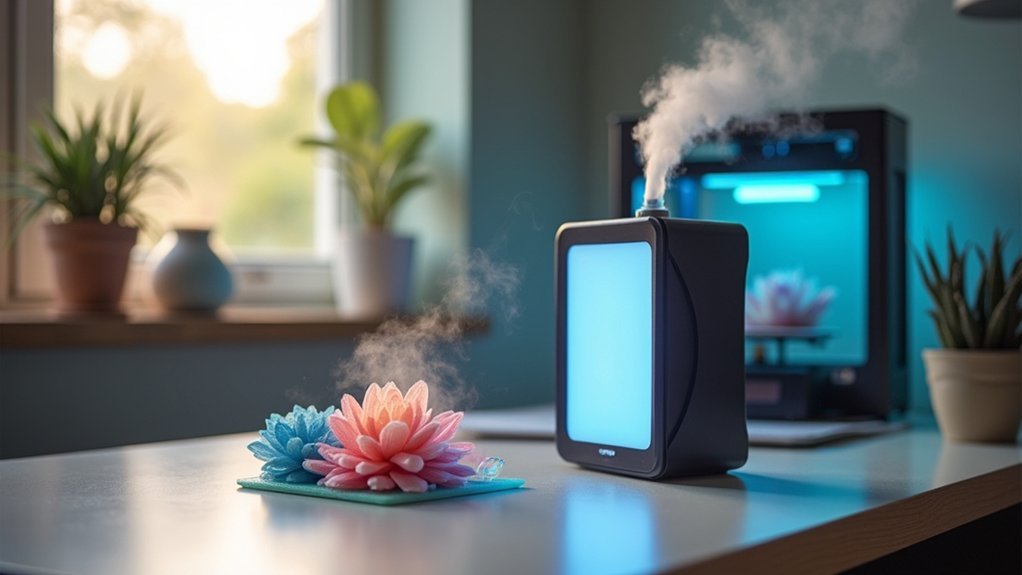
When space constraints make permanent ventilation installations impractical, portable air purification units provide an effective solution for filtering VOCs and ultrafine particles in small resin printing environments.
These units combine HEPA filters with activated carbon filters to capture 99.97% of particulates while absorbing harmful odors from your printing process.
Dual-filter technology eliminates 99.97% of harmful particles and chemical odors from resin printing operations.
You’ll want a unit with at least 150 CFM CADR rating to guarantee adequate air circulation in small rooms.
Position your portable air purification units close to your printer for maximum effectiveness against volatile organic compounds (VOCs) and ultrafine particles (UFPs).
Their lightweight design lets you relocate them easily as needed.
Remember to replace filters every 6-12 months to maintain excellent performance and protect your health during resin printing sessions.
Frequently Asked Questions
How to Ventilate a Room for Resin Printing?
Install an inline fan with ducting leading outside to remove harmful VOCs. Use a grow tent with negative pressure, add activated carbon filters, and regularly monitor air quality for safe resin printing.
What Respirator Should I Use for Resin Printing?
You should use a NIOSH-approved respirator with P100 filters for resin printing. Consider full-face models for extended exposure, and add organic vapor cartridges for enhanced VOC protection against harmful fumes.
How to Get Rid of Resin Printing Fumes?
You’ll eliminate resin printing fumes by using a fume hood with exhaust fan, adding activated carbon filters, installing inline fans for negative pressure, and positioning your printer in well-ventilated areas like garages.
What Kind of Air Purifier Do I Need for Resin Printing?
You’ll need an air purifier with both activated carbon and HEPA filters, featuring a MERV rating of 17 or higher and high CADR for effective VOC and particle removal.

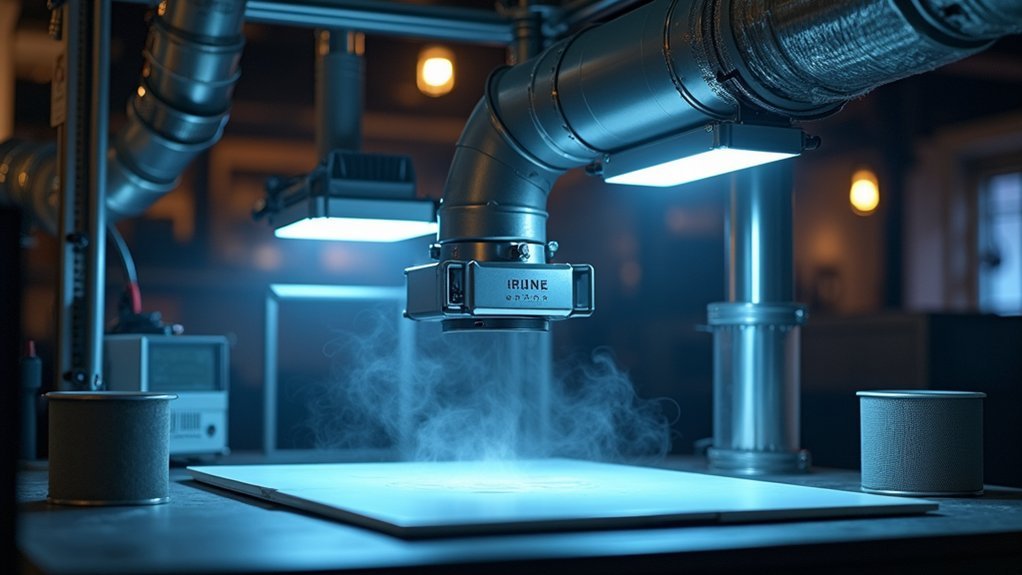

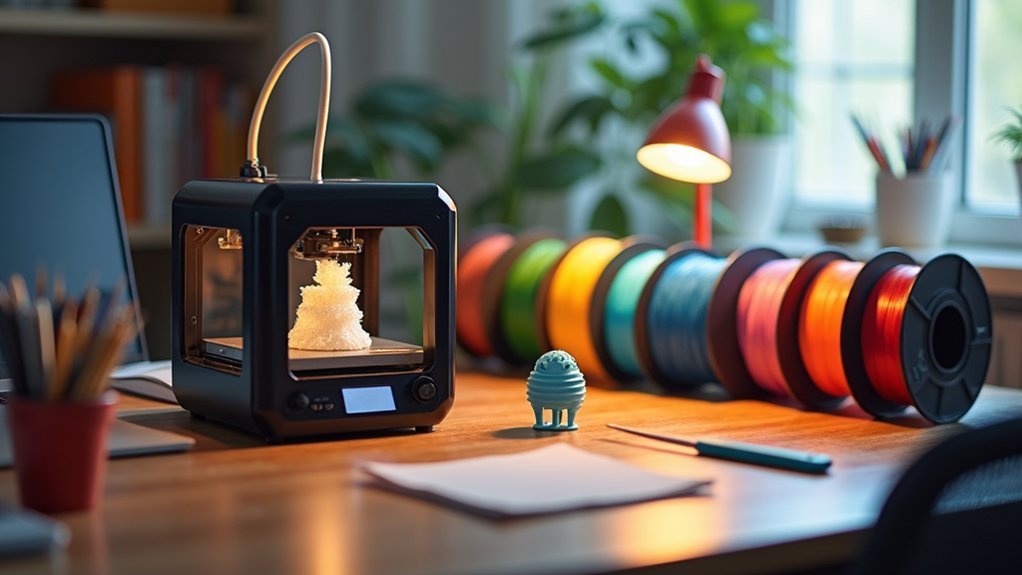
Leave a Reply